By: Travis Allen
@wizardbumpin
Don’t miss this week’s installment of MTG Fast Finance! An on-topic, no-nonsense tour through the week’s most important Magic economy changes.
If there’s one topic that comes up repeatedly from listeners/readers/tweeters/sycophants, it’s how to sell a Magic card. It’s never so broad as “how do I sell this card,” rather, it’s always in regards to some component of the process. What’s the best place to sell my card? How do you package your cards? Why did I just pay $7 to ship a PWE? (PWE means Plain White Envelope, by the way. It’s a commonly used term in our niche community.)
Today, a comprehensive guide to choosing the best venue to sell your card, how to package it, and how to ship it. With this guide, you’ll be shipping like the pros! Or at least me. So maybe Pro-Am at best.
Where To Sell
There are several options when choosing to sell your card. Like so few things in life, there is no clear “correct” answer. However, some are definitely preferable to others depending on the circumstance.
Facebook/Locally
Selling via your local Facebook groups or word of mouth in your neighborhood is, in theory, the best way to sell a card. There’s no shipping, no fees, your customer receives the card immediately, and if nobody else in the area has the card for sale, you’re not exactly facing a “race to the bottom” situation akin to what you’ll see on TCGPlayer. With no fees, no shipping, little competition, and the ability to sell cards at basically SCG’s prices, you can’t beat it the profit margins.
However, not all is rosy. Selling through Facebook has a problem which is twofold: scale and demand. If you’ve got one single card to sell, finding a local buyer isn’t a hassle. If you’ve got 20, 40, or 300 cards to sell, trying to directly connect to that many people will become a massive time sink. Additionally, there’s the issue that there simply may not be someone within your area that wants a card. Archangel Avacyn is easy to find a buyer for. How about the foil Japanese Ardent Plea I picked up recently though? There’s probably only a few hundred people in the country that will buy that card. What are the odds they’re in my backyard, and they’re reading the city’s Magic Facebook page?
Pros: Absolute best profit margins short of running an actual store
Cons: Only useful if you’re selling a small handful of high-demand cards
PucaTrade
This isn’t “selling” per se, but if you’re going to use the money you get from the sale to buy more cards, it may as well be the same. PucaTrade essentially gives you full value on the card’s worth, so long as you’re buying more cards with it. Your only overhead is shipping, as there are no fees by default, unless you want to trade for foils, in which case you’re signing up for Silver or Gold. If you’re just trying to turn that Avacyn into a couple of Thought-Knot Seers, this may be your best bet.
PucaTrade’s catch, of course, is that you don’t actually end up with any money at the other side of the transaction. Just Magic funbux. It can also be a pain to actually send your card, since it relies heavily on refreshing the “Send Cards” page vigorously and for extended periods of time. Then, after the card gets where it’s going, you’ve got to wait for people to send you what you want. It’s great for turning those Standard staples into EDH pieces you need, but if timeliness is important, this is the equivalent of travelling cross-country on a Stagecoach.
For more information on PucaTrade, you can check out my recent two articles on the topic, which cover the trustworthiness of the market and the best uses for the service. (And guys, if someone’s display name isn’t actually their name — if it’s “Wastes +15%” or something — check their profile for the correct name to put on the envelope.)
Pros: You get retail value for your cards…
Cons: …so long as you’re buying more Magic cards. Also, not exactly fast.
Buylist
Nearly all vendors, such as Starcitygames, Channel Fireball, and whoever else, have what is called a “buylist.” This is what that vendor will pay you for your cards. For instance, today, April 18th 2016, SCG will pay you $27.50 if you send them an Avacyn. So long as it’s in good shape, it’s easy money. No arguing, no fees, no waiting for someone to click “buy.” Ship it off to Roanoke and you’re $27.50 richer, minus shipping.
The biggest knock on buylists is that they don’t let you maximize your greed. Why sell an Avacyn to SCG for $27.50 when you can sell it on TCGPlayer for $40? That’s an extra $12.50 you’re making! (Well, kind of. But we’ll talk about that more when we get there.) Buylisting will, in general, make you less money per card than other outlets. The tradeoff to this is how much faster and easier it is when dealing with a large volume of cards. If you just picked up a collection and have tens to hundreds to thousands of cards to sell and don’t want to deal with selling each individually, buylisting gives you an avenue with a reasonable rate of return, especially when you consider what it asks of you in time/shipping costs. Of all the options on our list, buylisting may be the best or second best overall option, especially since it scales up so well. Many of the writers here make heavy use of buylists on a regular basis.
There’s also the added feature that is trade-in bonuses. While SCG will give you $27.50 cash for your Avacyn, they’ll also give you the option of receiving $34.38 in store credit. How good the bonus is depends on the store, and it usually lands somewhere between 15% and 30%. In order to determine whether the trade-in bonus is worth it, you need to check whether or not the store actually has the cards you’re looking to pick up, and if they do, if it’s cheaper to buy them there with the store credit bonus than it is to take the cash and buy them elsewhere. The answer changes every time, so there’s no clear-cut solution other than “look it up.”
If you’ve only got a handful of cards to sell and don’t mind putting in a little extra time, or if you need to squeeze every last dime out of a card, this isn’t your best bet. The more cards you have, though, the more enticing buylisting becomes.
Pros: Far and away the fastest method of turning more than a few cards cards into cash, and often the best return rate when considering time invested
Cons: Often not the absolute most money you can squeeze out of an individual card, rates for non-NM cards are abysmal, and your cards need to truly be NM
eBay
Ah, eBay. Once the face of the new millennium and a promise of what wonders the internet would herald for our society. Today, it’s a black hole of disputed transactions, missing packages, obnoxious fees, and grey-market surgical equipment.
eBay is essentially the poor man’s TCGPlayer. When you can’t find a local buyer for your single card, you want the most value possible for it, you don’t want to bother setting up a TCGPlayer seller’s account, and you’re willing to tolerate some of the worst people outside of Reddit, eBay is where you turn. Honestly, I rarely use eBay these days. The only time I list anything there is when I’m the only person selling that particular card, so that there’s no competition. Then you get to make up some ridiculous price and hope someone pays it. I’ve got a foil Korean Nykthos, Shrine to Nyx? Uhhh, how about $200? Nobody else has one, so who is going to say that’s too expensive?
I strictly use the Buy It Now feature when I do make my rare forays into eBay. Auctions are unreliable, and in the face of so many other options, hardly ideal. I’ll list my card with a Buy It Now, forget it’s there, and every so often be pleasantly surprised when my phone dings and it’s an email from eBay telling me something sold. Listing in multiple locations is not a bad idea either. Especially on your more unique cards, stick the card on eBay with a BIN of $100, and then also list it for sale over on TCGPlayer for $90 or whatever the going rate is. You’ll probably sell it on TCGPlayer first, but you get the freeroll of possibly selling your cards at above market rates to someone that probably scammed their way into a handful of eBay bux and is using them to purchase Magic cards. Just make sure that you remember two things: if it sells in one location you remember to remove it from the other, and always ship with tracking when selling on eBay.
Pros: Gets you actual cash in an amount that’s probably closer to market than buylist, and if you’re lucky, above market
Cons: Buyers will try to scam you, turnover is slow, the interface sucks, eBay is an obnoxious company
TCGPlayer
When you’ve got more than two or three cards to sell, TCGPlayer is often the best place to turn. Setting up a seller’s account is quite easy (no more difficult than eBay, I’d say), and it gives you access to a market that wants exactly what you’re selling. Fees are a tad on the high side but not backbreaking, the interface improves every few weeks, and you reach the most motivated customer base. Reaching an engaged customer base is especially important when you’re selling anything other than non-foil English format staples. Any foreign or odd foil cards are best sold here, as other venues either don’t allow for those items to be sold, or there’s very few people looking for them.
Turnover is also quite high relative to other venues, with Standard staples listed at TCG low often selling within minutes or hours. There’s no quicker way to turn your fresh Avacyn into cash money than selling it on TCG. Additionally, your clientele generally isn’t awful human beings. I’ve got around 500 successful sales on TCGPlayer at this point, and I think maybe one or two involved a cranky buyer.
Of course, nothing’s perfect. As mentioned, the fees aren’t ideal, especially on lower value cards. If the card is $4 or $5 or less, I generally don’t even bother to list it. It’s not that bad if you’re running a large inventory, but until you get to “this is my full time job” status, listing $.25 cards isn’t worth your time. For anything that small, you’re much better off turning to buylists. You’re also represented as a store, not just a dude with a card. This means the burden of customer service is squarely on your shoulders. List a card at $.90 instead of $9.00? It’s on you to eat that and put the card in the mail anyways. You need to ship in a reasonable amount of time, and you’re on the hook to cover the return if your customer decides they don’t want the card.
Perhaps the worst part of selling on TCG is the “race to the bottom” syndrome. With private individuals able to sell on TCG these days, everyone and their brother is listing the cards they cracked at the prerelease or wherever for sale. Since everyone wants their cards to actually sell rather than languish, they will price it at the lowest current market price, or even a few cents lower than that. Unlike SCG, which can say “we’re charging $10 for this card and that’s that,” the TCG price on newer cards just keeps dropping and dropping, often until it’s nearly at parity with buylist prices. This doesn’t happen as much with older cards that don’t have new supply entering the market, but you’ll definitely experience this with newer cards.
Quick aside: If you’re planning on using the cash from your card sale to buy more cards, I’d recommend making a point to check the card’s value against PucaTrade first. For instance, the cheapest Avacyn on TCG right now is $41.75. If you sold at that price, you’d pay 11% + $.50 in fees. (I’m excluding shipping because you pay that on PucaTrade as well.) Overall, you’re putting $36.66 in your pocket. That’s good for roughly 8 Prairie Streams. Over on PucaTrade, sending someone an Avacyn will net you 4,738 points, and Prairie Streams are 471 each. That means you can pick up 10 Streams for one Avacyn instead of 8.
This is only one example, and you probably don’t want 8 or 10 Prairie Streams anyways. The point to consider is that, because the TCG market and the PucaTrade market function similarly, but not identically, sometimes you can get more value out of a specific card in one place than another. If you’re planning on funneling all the proceeds back into cards anyways, it pays to do some quick math and figure out which will get you more cardboard for your trouble. This works in the other direction too — oftentimes it’s a better return to sell the card on TCG than it is to send it on PucaTrade. It changes on a card-by-card basis.
If you’re a mid-level seller, TCG is often your best bet. The time requirement is more easily managed than trying to sell everything locally. Returns are solid, and reaching the widest market possible for obscure cards is appreciated. In general, I’d say that TCG, along with buylisting, are the two best options for anyone selling more than one or two cards.
Pros: You reach your widest market, get to sell at retail prices or close to them, and your buyers find you, rather than you finding them.
Cons: Fees could be better, you take on more responsibility as a seller here than elsewhere, payments are made on a scheduled timeframe, can’t provide photos of non-NM cards
Sleeving
You’ve chosen where to sell your cards, and you’ve hooked a sucker. They agreed to give you cash/points/blood for your cardboard. Now you’ve got to get the card to them. Contrary to popular belief, you can’t just stick a stamp on the card and go with that.
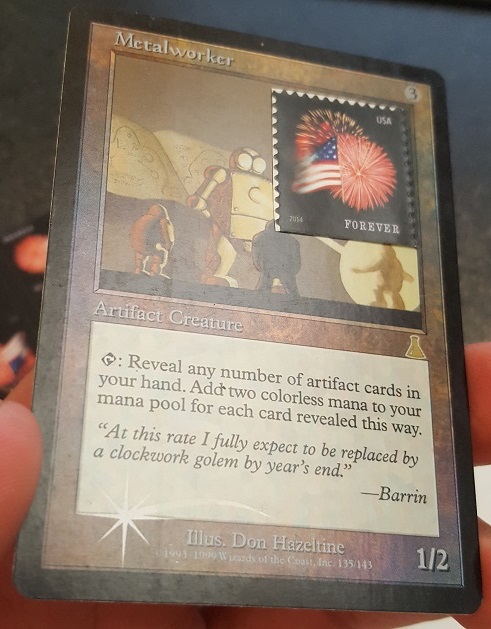
Start by putting the card in a sleeve. I use leftover, play-grade sleeves for between one and three cards, and penny sleeves for four cards or more. Sleeves that you’ve been using awhile on your Standard deck and need to be replaced are great shipping sleeves. You should also be saving the sleeves and toploaders that the cards you buy come in, so that you can recycle those.
I use generic penny sleeves available at any card store or Amazon, and there are larger ones out there that are great for holding 10 or 20 cards at a time. They’ll come in handy when shipping to buylists. Finally, here are some solid toploaders. They’re standard fare, and exactly what you’d expect them to be. If you’re going to be shipping any amount of cards greater than zero, you’ll want spare sleeves and toploaders.
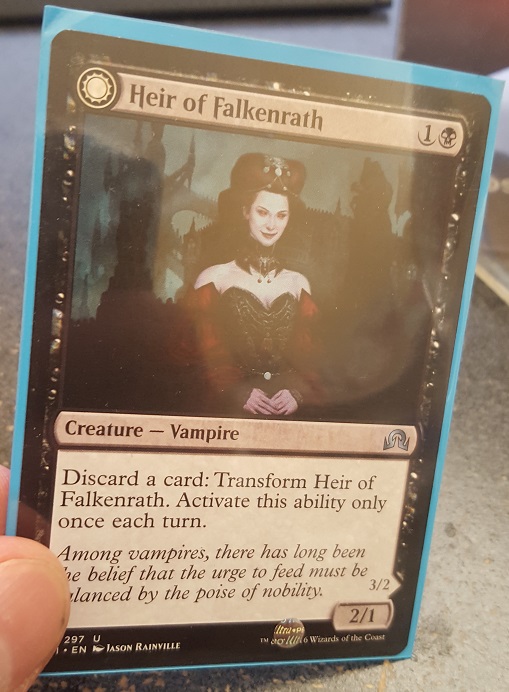
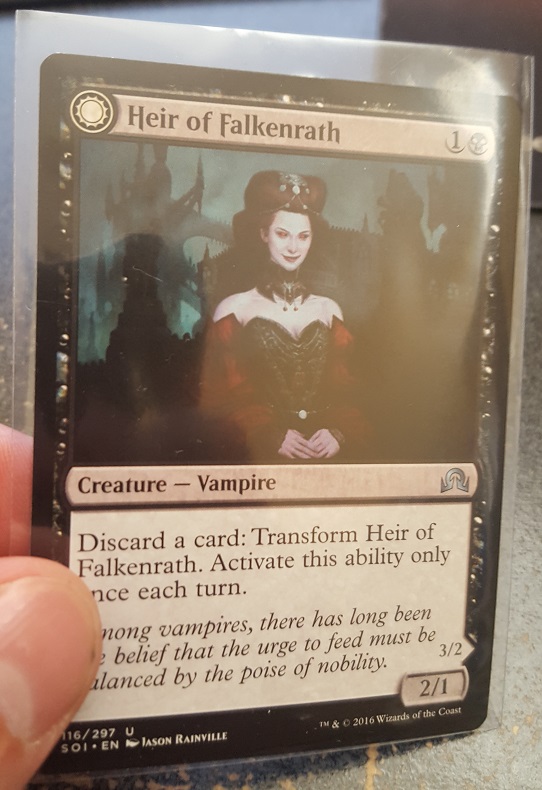
Toploader
If you’re shipping one to three cards, put them in a normal sleeve. If it’s four cards, put them in the penny sleeve. More than four cards and you’re using a second toploader. Once you’ve got them sleeved, into the toploader they go. Put them in upside down if possible, though depending on the sleeve and toploader, this may be too tight a fit. If you reach the point that you’re looking for another object to hammer the cards into the loader, perhaps reconsider your strategy.
Once you’ve got the cards in the loader, we need to seal it. I like to use a small memo pad and cut the sheets in half. If it’s a TCG order, I’ll write out the order number, what I’m sending, and my store name/Twitter handle. If it’s a PucaTrade card, I’ll write the trade number on the slip. If it’s eBay, I’ll write a derogatory message insulting the customer’s choice of card. For TCG orders specifically, I opt to use this rather than a packing slip. The default packing slips that TCG provides are garbage because the seller (as of April ‘16) isn’t immediately identifiable, and frankly, it’s a huge waste of paper. Go green and keep it small!
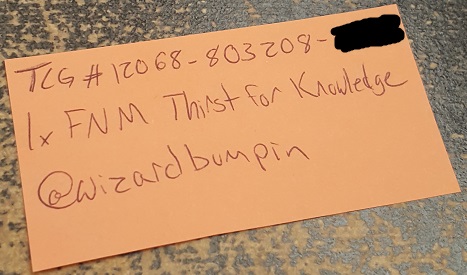
Adhere your scotch tape to the bottom of the paper, and then use the rest of the strip of tape to seal the loader’s opening. This keeps the loader closed in transit while making sure that A. your recipient looks at who sent the card while it’s actually in their hand, rather than referring to the discarded packaging, and B. they can actually get the tape off the loader without potentially damaging the card.
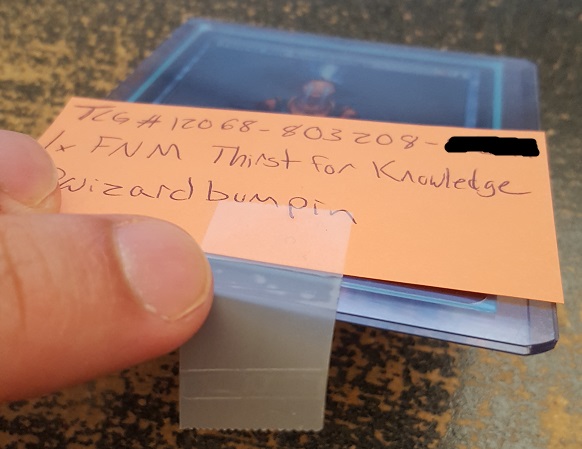
Make sure you don’t just stick tape over the opening of the loader. It can be nearly impossible to get it off, and will result in the recipient using scissors or a knife to cut open the loader, possibly damaging the card. Also, make sure you include the PucaTrade number somewhere inside the envelope! A PWE with a PucaTrade number written on the outside is asking to be stolen, since if the person recognizes the number, they’ll also know that they can pocket the letter and nobody on either end will be able to do anything about it. And don’t forget the number entirely either. While you’re just sending a single foil Wastes to that guy, he’s currently receiving six of them, and if yours doesn’t have a trade number inside, how is he supposed to know who it was from? Don’t make people do homework to figure out where a card came from.
If there are more than four cards in a sleeve, such as when buylisting and using the larger penny sleeves, I’ll start by sealing the sleeve itself with tape. Make sure to fold one end, so it’s easily peeled off, and pinch it shut, so that the cards don’t bump into the sticky tape in transit. Then, I’ll tape the sleeve to the outside of the loader for rigidity and protection. I may tape another loader over it as well if the cards are a little more valuable.
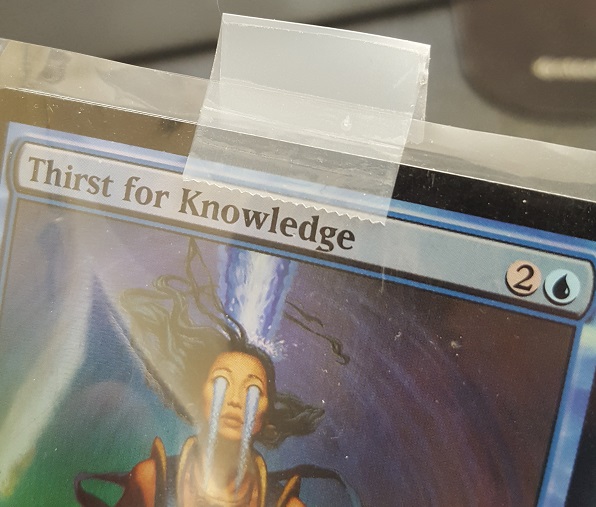
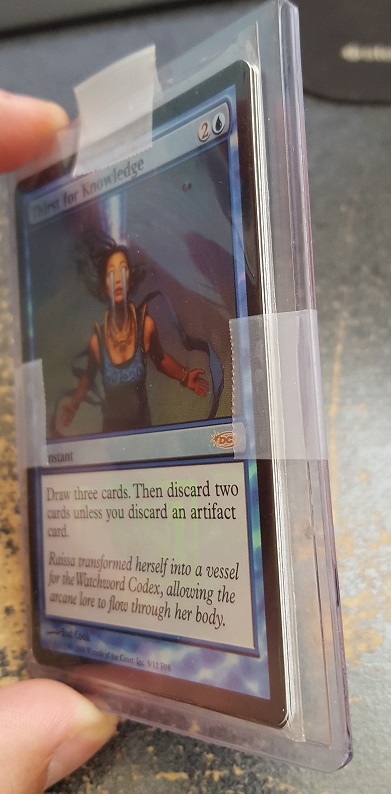
You can’t do this if you’re putting the cards in a PWE, but if you’re mailing that many cards, it should probably be in a bubble mailer anyways.
When buylisting more than 10 or 15 cards, simply stick them in the larger sleeves, tape the sleeves shut as outlined above, and toss those into a bubble mailer. As long as none of the cards are exceptionally valuable, I wouldn’t worry about them getting damaged.
As an alternative to taping any sleeves or loaders shut, you can always try team bags. You’ll see these most frequently when you order from larger, more established stores. I haven’t used them myself yet, but I’ve never had a problem when receiving cards packaged inside them. As long as they aren’t so expensive as to be prohibitive, I’m game.
Whatever you do, on behalf of everyone who has ever received a Magic card in the mail, I beg of you, please don’t attempt to suffocate the loader with tape. Don’t seal the entire opening. Don’t cross-hatch the thing with ultra-adhesive industrial grade sealant. Don’t hermetically seal it shut with tape whose edging penetrates and bonds to the loader’s surface, becoming one cohesive structure. It makes it a nightmare to get the cards out, and the loader either ends up with layers of tape stuck to it that can be used to identify its age akin to tree rings, or the tape is removed and the loader permanently coated with an adhesive film that attaches to any stray sleeve or card it comes in contact with. A single piece of tape, either folded over on one end or with a piece of paper attached, is all that is necessary.
For the most part, you’ll probably shipping one to two cards, and probably in a PWE. Those are easy. Stick the cards in a sleeve, the sleeve in a toploader, and tape the loader shut with a piece of paper so people know who sent it to them. One last thing: if you’re shipping in a PWE, you must use a toploader. Sandwiching the card between two commons is not going to cut it.
Packaging
Your cards are sleeved and ready to go. Now comes the pesky task of getting the card to them. What are your options?
Plain White Envelope (PWE)
PWEs are what most of your daily mail comes in. Simple, white, envelopes. They typically look like this:
I’ve been pleased with these envelopes. There’s a lot there, but if you’re selling at a decent clip, you’ll be glad to have them. They don’t spoil, so the only real cost to buying in bulk is space. If the link dies, they’re #6; 2 x 3.8 x 6.6in. Security envelopes aren’t necessary, and going any wider doesn’t get you anything you need. If you’re reaching the point where the volume of cards is enough that you need two plastic toploaders worth of cards, you should be using a bubble mailer anyways.
The industry standard among non-professional sellers is that cards under $20 go in PWEs, and anything over that is shipped in a bubble mailer. Here’s the rule of thumb: If you would be upset replacing the card, don’t ship it in a PWE. Nobody wants to replace any card, but it gets especially painful the more costly the card. At the same time, you’re weighing that against the cost of shipping the card with tracking, which as of April 2016 is $2.45. It’s not worth paying $2.45 to ship a $5 card, and it’s not worth running the risk of losing (or having claimed lost) a $50 card because you didn’t want to shell out two bucks to protect it.
Here’s an important point specific to PWEs: You can’t cheaply put any sort of tracking or insurance on them. This burns nearly every single person that sells a $20+ card the first time. They put it in the envelope, take it to the post office, and ask for tracking. After a protracted conversation, they found out that the only way to do this is going to cost like $6. This is because envelopes, in order to be tracked, can’t be sent as First Class, but rather need to be Priority Mail. Or something like that. Whatever. It’s not worth it to try and put tracking on PWEs, so don’t try. It’s much more expensive than buying a bubble mailer and putting tracking on that. Bubble mailers are considered packages, not letters, and are subject to different rules.
When putting the loader into the envelope, I like to use a small piece of tape to hold the loader in place. If the loader is sliding around in transit, it may rip the envelope. Affix the tape to the edge of the loader and wrap it over the edge as so. It can be mildly annoying to receive a loader taped to the envelope, but the alternative is far more unpleasant.
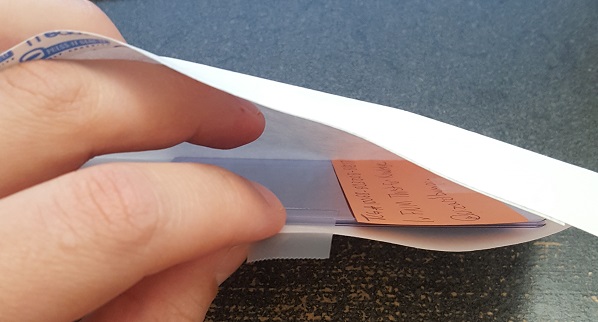
Affix the shipping address, stamp, and the return address. At this point, you may choose to then write “non-machinable” on the front and back of the envelope. This technically costs extra postage; $.22 more, to be precise. I’ve never been charged for it, but it is technically something you’re supposed to pay for. I’ll probably stop doing it because I don’t want my letters to start getting returned to me.
As for the return address, I bought a bunch of cheap address labels on VistaPrint. That company is shady as hell but the labels are cheap and after the 20th time you’ve written your own address, you’ll be glad to pay for them. You can also get a custom stamp, which is probably what I should do the next time my label supply gets low.
Bubble Mailer
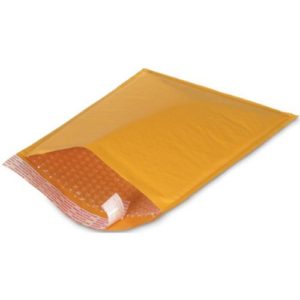 When the card is worth more than $20 or there’s more than four of them, turn to bubble mailers. Here’s the latest batch I picked up, and if the link is dead, they’re 4 x 8in self-seal Bubble Mailers. You can comfortably get about two 20-ish stacks of cards into a mailer of this size, which will cover you on nearly all sales, and most small buylist orders. On the rare occasions I ship more cards than that, I’ll suck it up and drive to the post office to buy the bigger package and ship it right from there.
When the card is worth more than $20 or there’s more than four of them, turn to bubble mailers. Here’s the latest batch I picked up, and if the link is dead, they’re 4 x 8in self-seal Bubble Mailers. You can comfortably get about two 20-ish stacks of cards into a mailer of this size, which will cover you on nearly all sales, and most small buylist orders. On the rare occasions I ship more cards than that, I’ll suck it up and drive to the post office to buy the bigger package and ship it right from there.
There’s no special tricks here. Once the card is sleeved, dump it into the mailer, seal it shut, and you’re good to go. Don’t write the address on the package though! There’s an easier way we’ll explore shortly.
Shipping
Bubble mailer in hand, how do you actually get this card to your intended target customer? If it’s an envelope, it’s easy. Affix a stamp and then leave it inside the mailbox of your home. Yes, you can do that! If you leave a stamped envelope or mailer (with appropriate labeling) in your own personal mailbox, the carrier will pick it up for you. No need to stop by an actual blue mailbox on the way to work. If your office has a mail bin that you can toss stuff into by all means, go for it, but for those of you without that luxury, leaving PWEs and even bubble mailers in your own box is a godsend.
Stamps, like envelopes, don’t expire, so if you plan on shipping cards with any regularity, don’t hesitate to pick up a few sheets and toss them in a drawer. As for bubble mailers, there’s a great at-home solution for purchasing postage.
PayPal has a function called “multi-order shipping.” Most people don’t know it’s there, but it’s fantastically helpful for those doing the type of shipping we do. It allows you, from home, to purchase and print a complete shipping label for your packages. Between buying your stamps from the grocery store and PayPal’s shipping service, you’ll never need to go to the post office again! Even better, PayPal’s service gives you a discount over paying for shipping at the post office! Yowza!
Here is the link I use to access the service. Chances are if you’re reading this more than a few months after it’s been written, the link won’t work any longer, and the site’s interface may change too, so showing you a screenshot where the link is located isn’t any more helpful. What you’re looking for is called “Multi-Order Shipping,” and you can find it after logging into PayPal.
Once you’re in, you’ll want to choose “File,” and then “Create New Orders.” We’re printing a shipping label for a bubble mailer, so I choose “Package/Thick Envelope” in the “Service Type / Package” dropdown. For only a few cards, 1oz is a fine weight. I tend to skip insured value and signature confirmation until the card is over $100, and even then I’ll only insure it. I basically don’t choose signature confirmation, because receiving a package that requires a signature can be a massive headache for the buyer. The only time I recommend requiring a signature is if the package’s value is in the neighborhood $1,000. You can’t insure a package worth that much through this interface though, so purchasing signature confirmation at home shouldn’t come up often.
Fill out the “Ship To Address” section, and then if you’ve got another label to print, “Create Another.” Otherwise, “Save and Close.”
Once you’ve got all your labels in, click the green “Print” button in the upper left corner. You’ll see a list of all your labels and the total cost. Once you’re happy with what you’ve got, “Pay and Print” will charge your PayPal account and print the labels. You even get a handy pop-up window with all the tracking numbers that you can copy/paste to the appropriate buyers, including the “Add Tracking Number” button on TCGPlayer. Quick tip: if you don’t have funds in your PayPal account, it won’t let you pay for the labels. No charging directly to your bank account here. Make sure you keep a balance in your PayPal account so that you can print labels as needed, as it can take several days to transfer funds from your bank account to PayPal.
With the labels printed, simply affix them on all four sides to the mailer using packing tape. A simple device for dispensing packing tape such as this will make your life considerably easier. Finally, I like to put the label on the side with the seam to make sure everything is nice and snug.
There you have it! How to choose where to sell your card, how to package the card(s), how to choose your shipping vessel, and the easiest way to get those to your customer. Any regular in the Magic market has had to learn their way through this process, and I’ve found these strategies work great for someone shipping more than a few cards a week but not running a full store. I’m sure those guys out there that ship hundreds of cards a week may have refined things differently than I have, and I’d be curious to hear if there are better ways than what I’ve outlined here. Happy shipping!



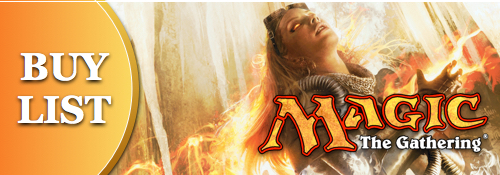
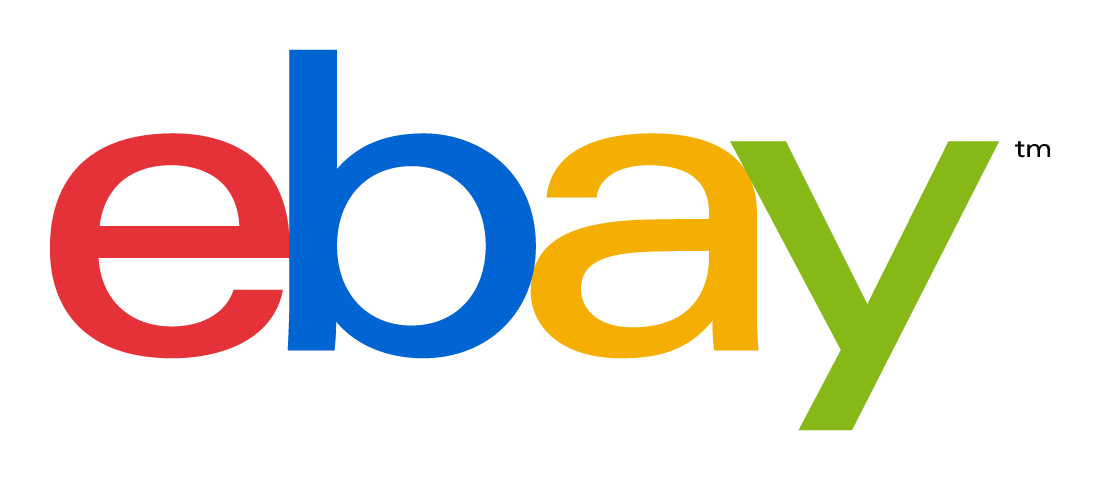
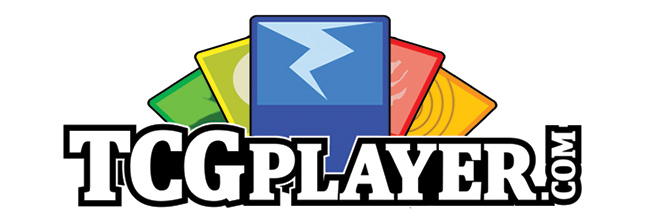
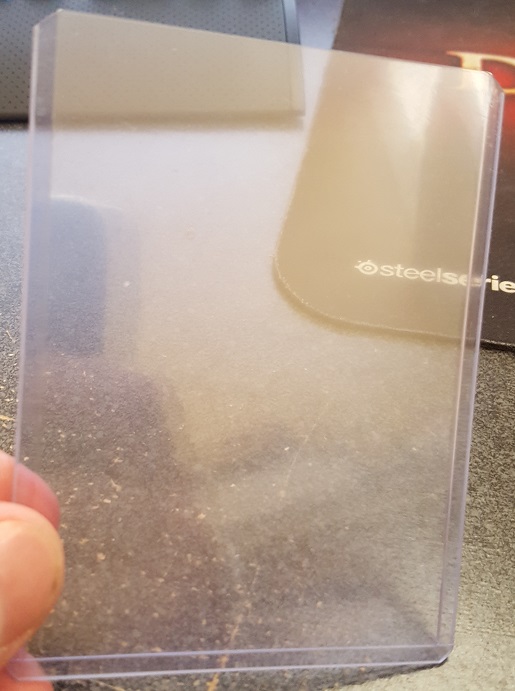
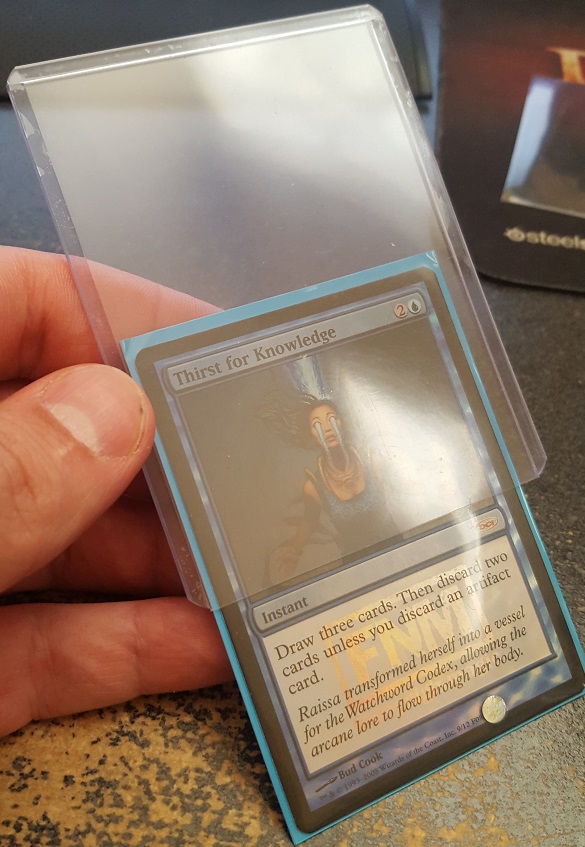
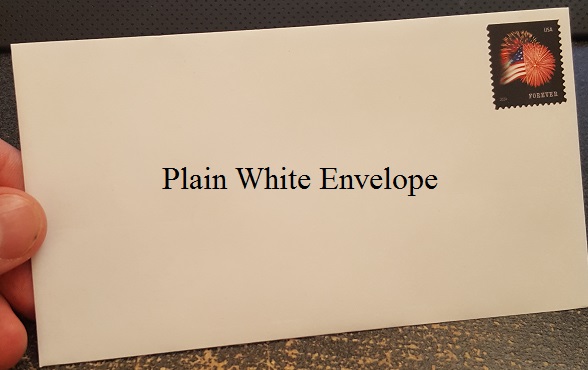


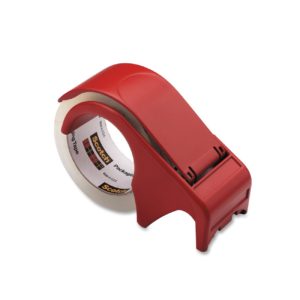
I have for along time bought on sold via the UK facebook trading page, it operates more akin to Ebay as in you have to ship but I have found overall less hassle. But loss and fraud are definitely a thing. I know you were more thinking on local magic scene pages but do these large geographic pages also exist in the US?
Honestly the UK page is probably a similar size to a Major US City, we are a small country 😉
Wiki tells me the UK population is about 65 million, which is considerably larger than even the largest US city, NYC, at around 9 or 10 million.
I don’t know of Facebook pages for geographic regions here in the states, but that surely doesn’t mean they don’t exist. My concern with selling across a group of this nature is that you lose the ability to meet in person while also losing any sort of security measures provided by TCG, eBay, Puca, etc. The recipient can claim they got the card and there’s not a damn thing you can do about it.
The Portland Magic Group is quite active for Portland Oregon.
I’ve made several direct purchases from here. People are friendly and willing to meet up anywhere that’s convenient.
The page itself is quite active.
I don’t think the part about not tracking a PWE is true. I have shipped dozens of expensive cards tracked in PWE, just using paypal’s USPS label maker. You print out the label, tape it on, then mail it like a normal PWE, and it gets to the buyer no problem in all of my experiences. It costs $2.45, and I’ve never had any issues.
The lesson here is, don’t trust the workers at the post office, or go there at all if you can avoid it.
If you’re using the USPS label maker and paying $2.45, my guess is that you’re indicating it’s a package or large envelope. Those classifications disallow PWEs. I’m sure you’ve done it and not had problems, but it’s not ideal, because you never know when the USPS will take an issue with it.
I’d be interested to hear if it is indeed a package/large envelope label, or if you’ve found something different. Thanks Ben.
Yeah, it was the package/large envelope label. I honestly didn’t realize that it excluded PWEs from that designation, so that has always been how I’ve shipped items, just put directly into my mailbox with the label. You’re right that it’s not ideal, if it’s a disallowed class of items, and could definitely lead to potential issues, so “use at your own risk” or “not recommended” is likely the correct outlook.
I looked it up just to be sure, and USPS defines large envelopes as having a minimum size of 11 1/2″ by 6 1/8″. For reference, the envelopes I link in the article are 6.6″ by 3.8″; barely more than half of the minimum large envelope classification. http://pe.usps.com/text/dmm100/mailing-domestic.htm
My local USPS store gave me a helpful tip and told me to put a crumpled piece of paper in the bubble mailer to make it a package. She said that it had to be more than 3/4″ thick to make it a package. Using a bubble mailer will still go through the machine if all you have is the card in the envelope, not meeting the requirements to be considered a package.
She also didn’t care enough to make me open my own packages to repack them, and sent them off anyway. I would say most of the shipping issues would have to do with humans having bad days at work
I also used to do that, having been told the same, but at this point I’ve send out hundreds of mailers with nothing additional in them and had no problem. Anecdotal as well I suppose.
Great info. Just to add – you can send 4-6 (maybe 8) cards between two top loaders in a PWE. But in addition to the forever stamp, you will have to pay the extra ounce (0.21), and should pay the non-machineable (0.21). Standard letters can be up to 1/4″ thick. This is useful on Puca when I send 4, 5, or even 6 cards and they’re only worth maybe 500pp. Postage would be less than $1.
This is good info. It’s the paying the extra postage that gets me though. Since it’s not easy to do that at home, you have to go to the post office, and I try as hard as possible not to have to stop there.
My question to you is whether sending 5 or 6 cards worth 500pp is even worth it. If shipping is close to $1, 20% of your return is wasted on overhead.
Good write-up. In my experience (at least with Puca) traders/customers prefer that you use masking tape or painter’s tape rather than scotch tape. It’s much easier to remove from toploaders/sleeves/PWE etc.
I haven’t made this switch myself, but it’s a perfectly reasonable substitution. The only real barrier is that masking tape is, I believe, a fair bit more expensive than scotch tape. If it’s $4 instead of $2 a roll though, I’m not sure it matters that much.
“After affixing the shipping address, stamp, and the return address, write “non-machinable” on the front and back of the envelope, preferably using a red pen. I can’t say with certainty that this helps, because I don’t know anyone that works inside a mail sorting facility that can confirm/deny, but it doesn’t cost you anything, and it certainly doesn’t hurt.”
Within the USA, when shipping with USPS, Rigid/Non-Bendable/Non-Machinable/Do Not Bend is an additional $0.22 charge on top of the regular postage. This is for both domestic and international shipments. The USPS sells $0.22 stamps as “extra oz.” stamps, but they are the same value as the surcharge for Rigid packages.
One thing I did was download a packing invoice template to Word, and modify it to show the pucatrade information – to address, from address, item description, item quantity, set information and condition, and I ship those with every single trade – and then keep digitally under the lowest trade number (if multiple trade numbers in a package) so I can refer to every card I have shipped out.
It’s also great for the “customer” because it looks like you know what you’re doing, and it really only takes about 30 seconds to fill out correctly and print.
I think this is a great idea if you’re compelled to produce invoices. I tend to skip this though, because it uses a lot of paper and people get very little out of them. Unless you ordered a substantial quantity of cards from a vendor, do you ever do anything with the invoice other than toss it in the recycling bin?
Still a great way to provide invoices if you’re going to do it though. Thanks Kanjo.
Here’s a tip: If you write “nonmachinable” on a PWE, do NOT have it mailed in person by a post office worker (just drop it off in a mailbox). The post office workers (at least in my area) will demand an additional 22 cent fee to process nonmachinable Mail. Also, I would suggest instead writing “please do not bend” instead of “non-machinable”, as I have heard some post offices to either reject the letter or send it with “postage due” with improperly paid “nonmachinable” mail.
Good article. Thanks!
Very helpful article, and I wish every seller on TCG reads this. I’ve been collecting Expeditions lately, and you wouldn’t believe how some of them were shipped to me. Luckily none were damaged, and still NM condition. I had a Fire-Lit Thicket sent with no sleeve and half hanging out of a top-loader in just a plain envelope! I don’t like giving bad reviews, cause some of the sellers are just young college kids trying to make some extra cash. I just send them a kindly written suggestion on how they could mail there cards better.
I do tape my top-loaders shut when I mail cards out, but I fold one end to make a tab so its very easy to remove. Some vendors do this also. Lastly, LISTEN TO TRAVIS AND RECYCLE YOUR TOP-LOADERS!!!!
I’m right there with you. I too have gotten cards both ridiculously over- and under-packaged. Usually it’s brand new people that haven’t found their feet yet, although Troll and Toad still does it and they’ve been in the business for years.
Sending a friendly heads up to someone is a great way to help prevent problems in the future. I’ve sent quite a few on PucaTrade, especially when you can tell it’s from a young child. (Kid’s handwriting, mom’s return label.) Sharing information is how we all get better.
And now, you can link them to this article!
Helpful article, thanks.
However, one of your links is missing:
“A simple device for dispensing packing tape such as this will make your life considerably easier. [link] ”
Can you please fix this? I’m interested in seeing what device you intended to link to.
Thanks for catching this David. I went ahead and added a link in. Really, any dispenser with decent reviews will be fine. You really just want to do anything other than try and pull the tape directly from the roll, because the loose end will always end up sticking to itself, and it’s a nightmare to pull apart.
I have used team bags from the start. Tape drives me insane. Both applying and trying to take it off. You can get a bag of 100 for about $2.30 or $.02 per envelope. I have fit as many as thee top loaders in one before and still been able to seal it. You can also stick a card with the information on the inside.
Don’t use scott tape please! Is the worst thing I can find on any order I’d bought.
Use clear tape . Everything to get to your cards will be easy.
Quick tip on tape:
Clear tape is weak, which is one of the reasons why it reliably breaks apart when the receiver tries to take it off a top loader. As you know, it also occasionally breaks on the “sharp” edges of a top loader, making its use pointless at times.
I’ve been using electrical tape ever since I saw a fellow Deckbox trader ship that way. It’s easy to handle, tough and stretchy, and its thickness makes it easy to peel off a top loader. On top of that, I make a little tab on one end (folding it over itself) so it’s super easy to open.
Downside: It requires scissors and is a little more expensive. But Home Depot (or the like) have it for about $2 for 50+ft of it. My favorite is this kind since it leaves no residue.
eBay is handy for selling things you WANT to sell on TCG, but it’s “not quite NM” by TCG standards.
For example, a card is a $75 NM card, but a $55 SP card on TCG. Put it on eBay as “NM-, see pics for exact condition” and list it for $73.